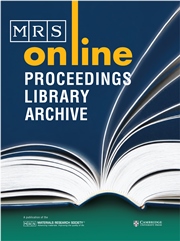Crossref Citations
This article has been cited by the following publications. This list is generated based on data provided by Crossref.
2008.
Fundamentals of Creep in Metals and Alloys.
p.
261.
2015.
Fundamentals of Creep in Metals and Alloys.
p.
301.

